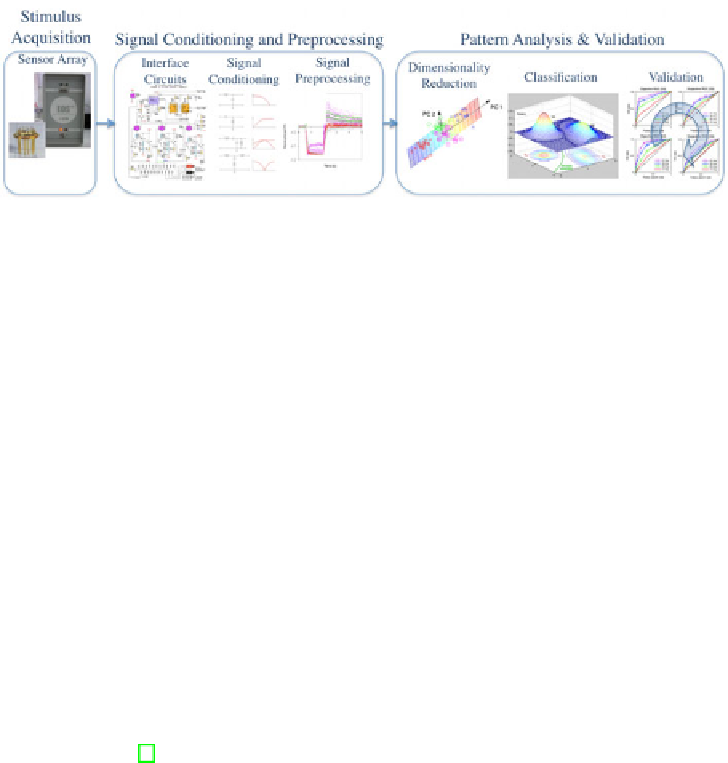Information Technology Reference
In-Depth Information
Fig. 2.
Block scheme representing the basic functioning of a sensory based machine
olfaction: the gas is acquired by means of a sensor array, which response represents the
input for the signal conditioning and preprocessing module. Here the response is con-
verted into an electrical signal by means of interface circuits and the signal information
is enhanced through analog conditioning. Digital preprocessing aims at transforming
the multidimensional signal into the most suitable form for further pattern analysis
module. The first computational operation of the last module is dimensionality re-
duction, performed through feature selection and/or projection; the classifier will then
partition the new obtained feature space in
c
regions (where
c
is the number of classes),
maximizing an objective function evaluated through the validation block.
4 Sensor Array
Gas acquisition in an electronic nose is performed by an array of non specific
sensors able to convert a chemical information into an electrical signal. Each
sensor reacts in a different way to the analyzed substance providing multidimen-
sional data that can be considered as an olfactory blueprint of the substance
itself. According to the physical principles on which the sensor array is based,
it is possible to group the different sensor technologies used for electronic noses
into four categories: chemoresistors, piezoelectric sensors, MOSFET sensors and
optical sensors [3].
Chemoresistors.
Chemoresistors, that are based on the conductivity change
that occurs when exposed to volatile organic compounds, are the simplest and
most used sensors for gas and odor measurements. There are two type of conduc-
tivity sensors: Metal Oxide Semiconductors (MOS) and organic polymers. The
advantages of the first type stay in their low cost, wide commercial availability
and high sensitivity (1-100 ppm or 10-1000 ppm if thin or thick film respectively
is employed), while the main disadvantage regards the need to operate at high
temperature, the prone to drift and poisoning and the sensitivity to humidity
(that can strongly impact the quality of the olfactory signal). The second type
of conductivity sensors, based on organic polymers, are also commonly used in
electronic nose systems thanks to their high sensitivity (10-100 ppm, sometimes
up to 0.1 ppm), the fact that they operate at ambient temperature (they do not
need heaters and, thus, are easier to make) and the fact that their electronic
interface is straightforward, making them suitable for portable instruments. On
the other hand, their response time is inversely proportional to the polymer

Search WWH ::

Custom Search